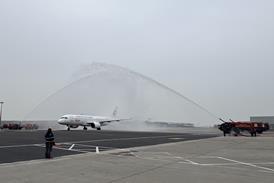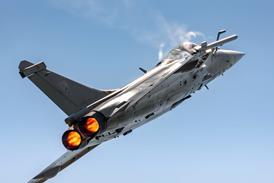Boeing says that, with sales of its Class 3 electronic flight bag (EFB) now well over 1,000 units, the equipment has reached “a tipping point" in terms of market acceptability. All Nippon Airways has just become the latest of several carriers, including Japan Air Lines, Continental Airlines and Air Canada to have ordered the device this year for their 777 fleets.
The Boeing Class 3 EFB, a pilot tool fully integrated with the aircraft’s avionic system, was first offered in 2002 on new aircraft and for retrofit. The cockpit interface is a special display outboard of each end of the main instrument panel on which pilots can call up and calculate performance data, view charts, and navigate on the ground using an airport surface moving map display. It also contains flight operating manuals and checklists.
ANA announced a week ago that the airline will install Boeing's Class 3 Electronic Flight Bag (EFB) in three new 777-300ERs still to be delivered this year. The airline’s first EFB-equipped 777-300ER was delivered in April and is now operational. Meanwhile Continental has taken delivery this month of its first two 777-200ERs with EFBs, making it the first US carrier to order the device on the type, and also to order it to be retrofitted to its existing 777 fleet.
Earlier this year Air Canada ordered the Class 3 EFB for its 777 fleet, and Boeing-owned EFB software supplier Jeppesen has just announced a deal with the carrier “over time to equip its entire fleet with a combination of Class 2 and Class 3 EFBs”. Class 2 devices are portable tablet computers that have a cockpit docking station and some integration with the aircraft’s avionic systems. Boeing says its new 787 will have the Class 3 EFB fitted as standard, and Air Canada has ordered 37 of the type.
Source: FlightGlobal.com























